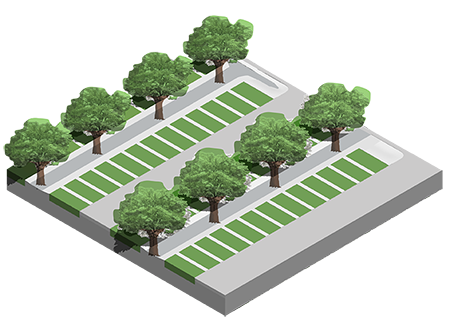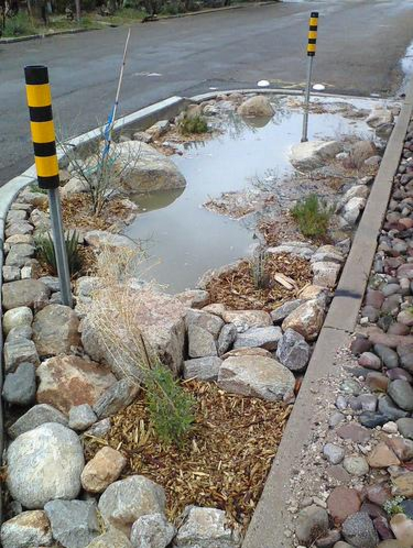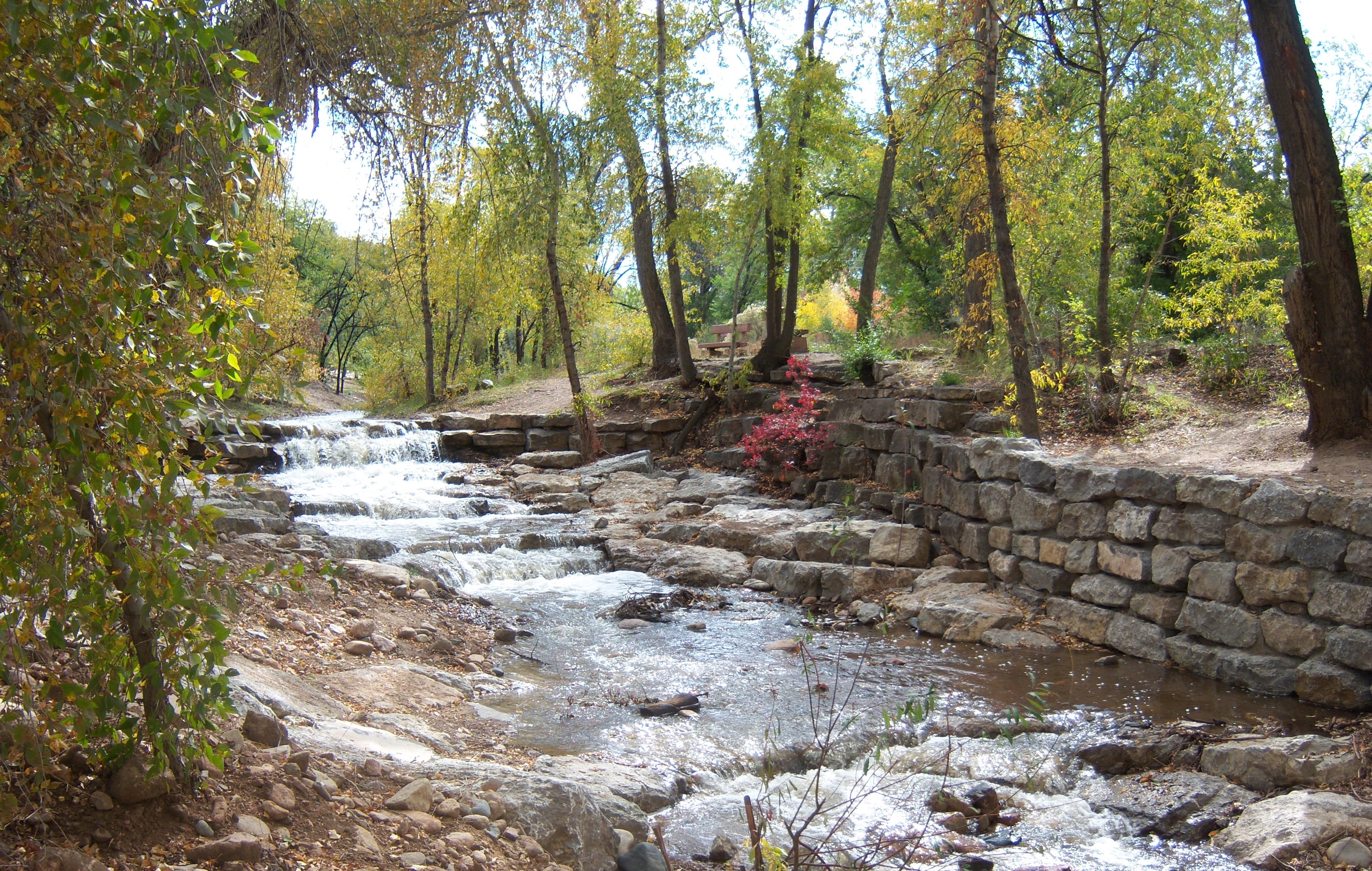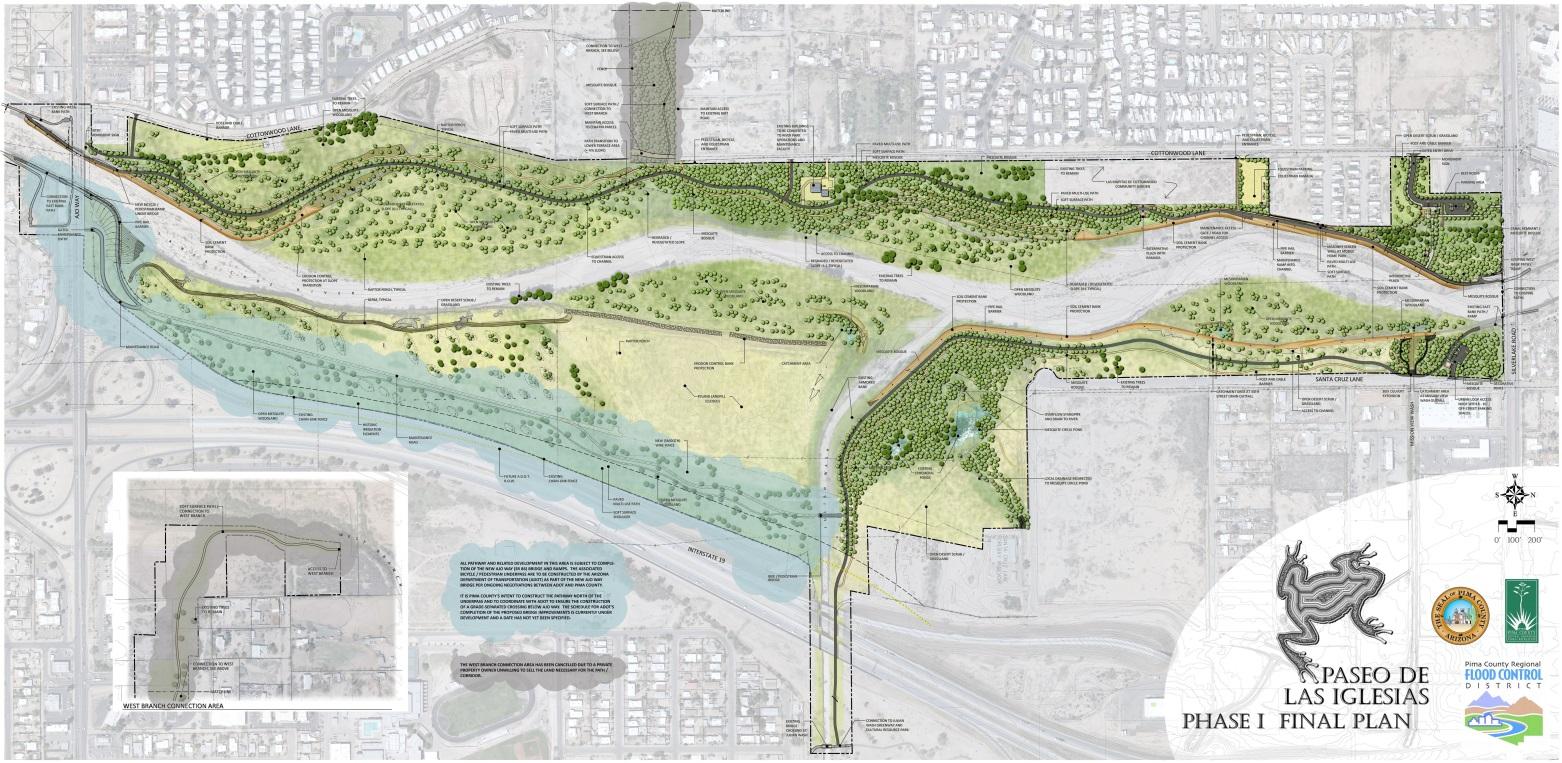Green Parking Lots
Green parking lots incorporate permeable or semi-permeable paving and porous design techniques to reduce stormwater runoff volume. In addition to permeable pavement, they often reduce or eliminate curbing and include extensive landscaping which treats runoff and improves the appearance of the parking lot while also improving water quality by filtering and removing pollutants from stormwater.
In addition to engineered design solutions, green parking lots may also incorporate local codes designed to minimize the land area devoted to parking. This may include reduced parking stall dimensions, shared parking arrangements, and/or reductions in the minimum number of parking spaces required.
Hazard Mitigation
Green parking lots provide on-site stormwater management by allowing infiltration of run-off into the ground during storm events, thus greatly reducing runoff volume and rate. They may completely eliminate runoff from small storm events and have the ability to capture as much as 50-80 percent of runoff from larger events.
Siting Considerations
Green parking lots require suitable soil types and porosity to allow adequate infiltration. Clogging is a major risk in areas with high volumes of sediment and dust, so more frequent maintenance would be necessary for installation in these types of locations.
Porous pavement may be used in low-, medium-, and high-traffic areas. Porous asphalt may be used anywhere that conventional asphalt is appropriate. Pervious concrete is more durable than porous asphalt in hot climates, but in cold climates it must be designed with a stone subbase and never placed directly onto a soil subbase. Permeable pavers (including grass paving systems) are less durable than porous pavement and are not generally suitable for high-traffic areas. Many permeable paver designs are not suitable for handicap accessibility.
Snow removal and ice treatment require special consideration. Sand and other abrasive materials may not be used on the surface due to the likelihood of clogging the system, and plow blades must be set higher to avoid damaging the surface. However, in light snow events, the heat retained by green parking lots often causes faster snow melt and leads to less accumulation.
Green parking lots should not be located in areas with highly contaminated runoff (such as gas stations and auto repair facilities) to avoid the potential for groundwater contamination.
Costs
Installation costs for green parking lots are generally higher when compared to traditional asphalt, but they vary greatly depending on a specific site’s characteristics (climate, topography, soil type, etc.) as well as the techniques incorporated within a particular parking lot design. Costs will be much higher if the underlying soil must be replaced due to inadequate infiltration qualities.
Cost savings can be achieved however, in the stormwater system itself. As green parking lots significantly reduce run-off and improve water quality, the need for a conventional stormwater management system is also reduced, resulting in cost savings.

Co-Benefits of the Strategy
Green parking lots improve water quality, increase ground water supply, and reduce the urban heat island effect. Their environmental impact is considerable, with the Environmental Protection Agency estimating that porous pavement can remove 65-100 percent of sediment, metals, and other pollutants.
Maintenance Considerations
Permeable pavement has a life span comparable to that of conventional asphalt or concrete pavement. However, regular maintenance is necessary to ensure that the paving system does not clog (thereby eliminating its stormwater benefits). This typically includes high-pressure washing followed by vacuuming to remove sediment.
Similar or Complementary Solutions
Green parking lots typically incorporate a variety of “green” features such as bioswales or rain gardens. Large amounts of runoff that cannot be contained within a parking lot are directed into the larger stormwater management system of the area, which may include various types of green recreational areas, wetlands, or other open space.
Additional Information
The EPA has developed a Green Parking Lot resource guide that touches on techniques, design, maintenance, materials and other relevant information.
The University of Maryland has created this fact sheet on permeable pavement to help answer any questions, including cost information.
North Carolina State provides the following guidance on maintaining permeable pavement.



